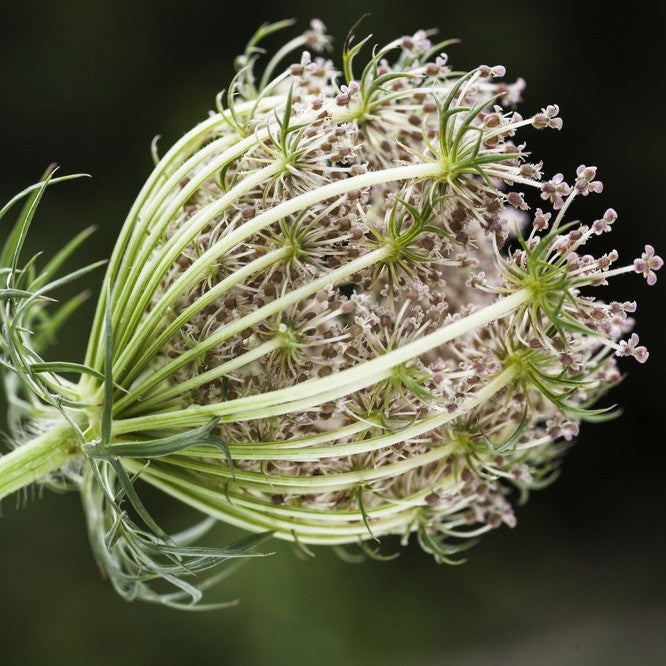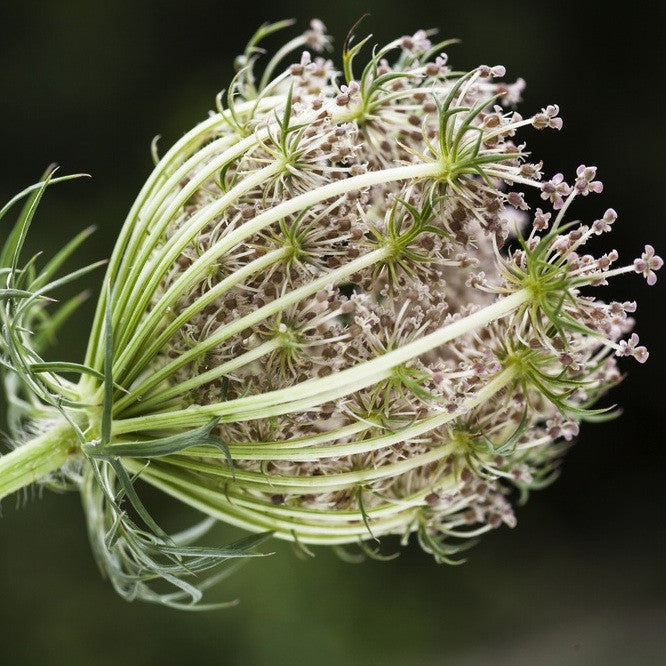TIMELESS Essential Oils
Carrot Seed (Wild Carrot), Organic
Couldn't load pickup availability
Pure, Therapeutic Carrot Seed essential oil (Wild Carrot), Organically Grown
Product Description
Botanical name
Daucus carota L. carota
Extraction method / Source
Steam distillation / Dried seeds
Aroma
Dry, sweet, fruity, warm, earthy
Note classification
Middle
Odor Intensity
2
Key constituents
Carotol, beta-pinene, alpha-pinene, geranyl acetate, trans-beta caryophyllene, caryophyllene oxide and many trace constituents
Plant description
Botanical family: Umbelliferae or Apiaceae
Wild Carrot is an annual herb with multi-branched green stems reaching up to 4 feet in height, and produces feathery green leaves and umbrella shaped arrays of flowers which develop into seeds. As the umbel (seedhead) matures, it curls inward, forming a cup. Unlike the edible carrot, it has a tough, white, inedible root. Wild carrot is native to North America, Europe and Asia.
Regions of Production
France, India
Growing Practices
Organically grown. Plants are tested after harvest for purity.
History / Fun Facts
Wild carrot is known by many other names, including Queen Anne's Lace, Bird Nest Weed, Bees Nest, Devil's Plague and Fool's Parsley.
Properties
Antiparasitic, antiseptic, carminative, cytophylactic, depurative, diuretic, emmenogogue, hepatic, cellular regenerator, vasodilatory (Battaglia, 2003)
Uses / Benefits
Skin conditions (eczema, psoriasis, oily skin, wrinkles), detoxification, water retention, liver problems. A natural vasodilator, it tends to lower blood pressure. Carrot Seed essential oil promotes regeneration of damaged liver cells and skin cells. Also used in making natural perfumes.
Fragrant influences
Aphrodisiac
Modes of Administration
Topical: bath, compress, massage, skin care)
Inhalation: Direct inhalation, diffuse
Blends well with
Frankincense, Geranium, Lavender, all citrus and spices
Safety
Nontoxic, non-irritating, non-sensitizing. Use with caution if you have low blood pressure.
Notice
This information is for educational purposes only. It has not been evaluated by the US Food and Drug Administration. It is not intended to diagnose, treat, cure or prevent any condition or disease and should not take the place of evaluation by a qualified health professional. Although we strive to provide information which is accurate and up to date, we cannot guarantee the accuracy or completeness of this information.
Precautions
Pure essential oils are highly concentrated plant extracts. Do not use them undiluted, or in the eyes or mucus membranes. If applying an essential oil to the skin, always dilute it with a proper carrier oil and test on a small patch of skin before applying to a large area. Do not take them internally except under the direction of a qualified professional trained in Aromatherapy. Always familiarize yourself with the safety, contraindications and proper preparation of each essential oil before use. Note that when using essential oils for children and the elderly, very low concentrations should be used. Keep all essential oils away from children and pets.
References
Battaglia, Salvatore, The Complete Guide to Aromatherapy, Second Edition, 2003. The International Centre of Holistic Aromatherapy, Brisbane, Australia
Cooksley, Valerie Gennari, Aromatherapy: A Holistic Guide to Natural Healing with Essential Oils, 2015. Floramed Publishing, The Woodlands, TX.
Falconi, Dina, Earthly Bodies and Heavenly Hair : Natural and Healthy Personal Care for Every Body, 1998. Ceres Press, Woodstock, NY.
Green, Mindy, Natural Perfumes, 1999. Interweave Press, Loveland, CO.
Hampton, Aubrey, Natural and Organic Hair and Skin Care, 1987. Organica Press, Tampa, FL.
International Fragrance Research Association, http://www.ifraorg.org/en-us/standards (January 5, 2016)
Schnaubelt, Kurt, The Healing Intelligence of Essential Oils: The Science of Aromatherapy, 2011. Healing Arts Press, Rochester, VT.
Tourles, Stephanie L., Hands On Healing Remedies, 2012. Storey Publishing, North Adams, MA.
TIMELESS Essential Oils - Authentic Aromatherapy Source: We guarantee the purity and quality of all our therapeutic oils. The current Certificate of Analysis is available upon request. All essential oils are best stored in an airtight container away from heat and light.


